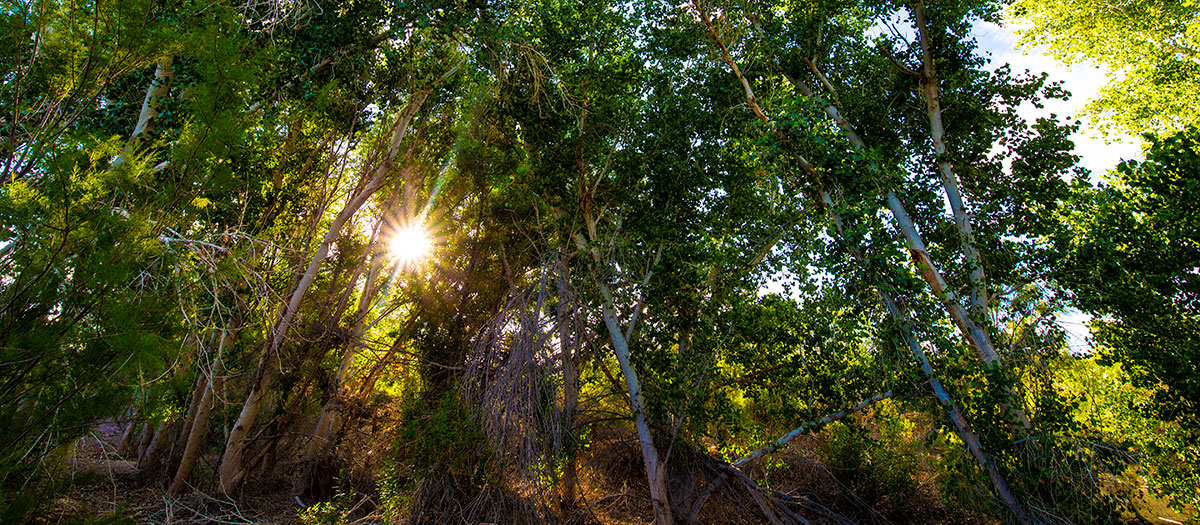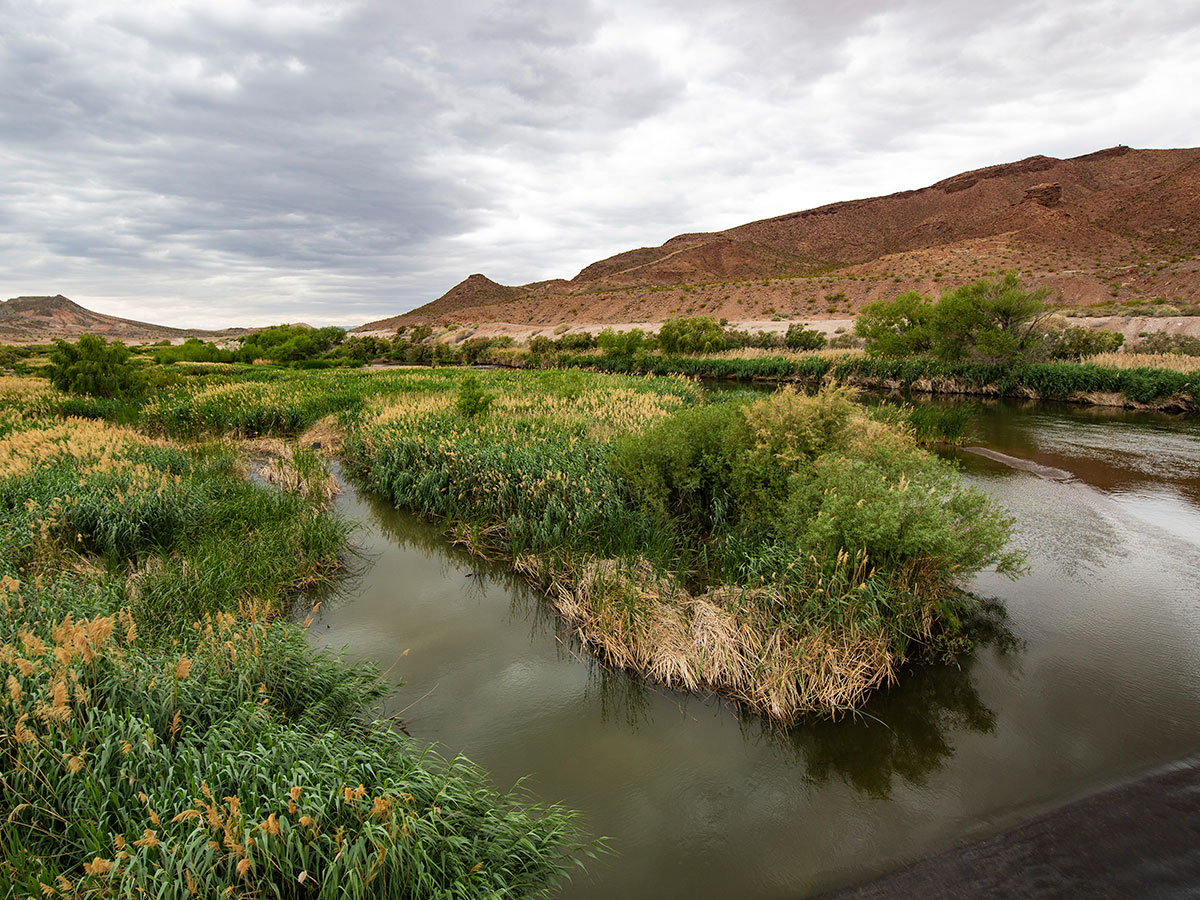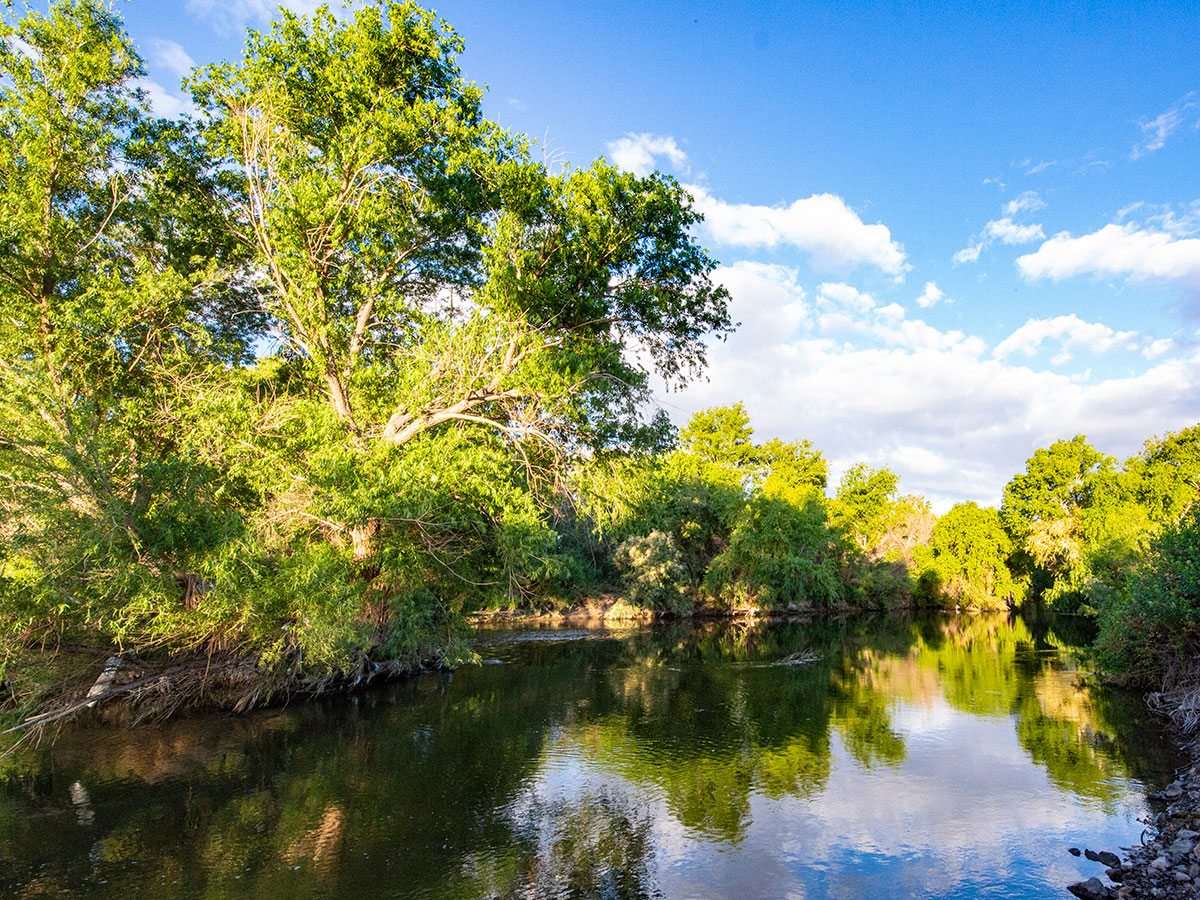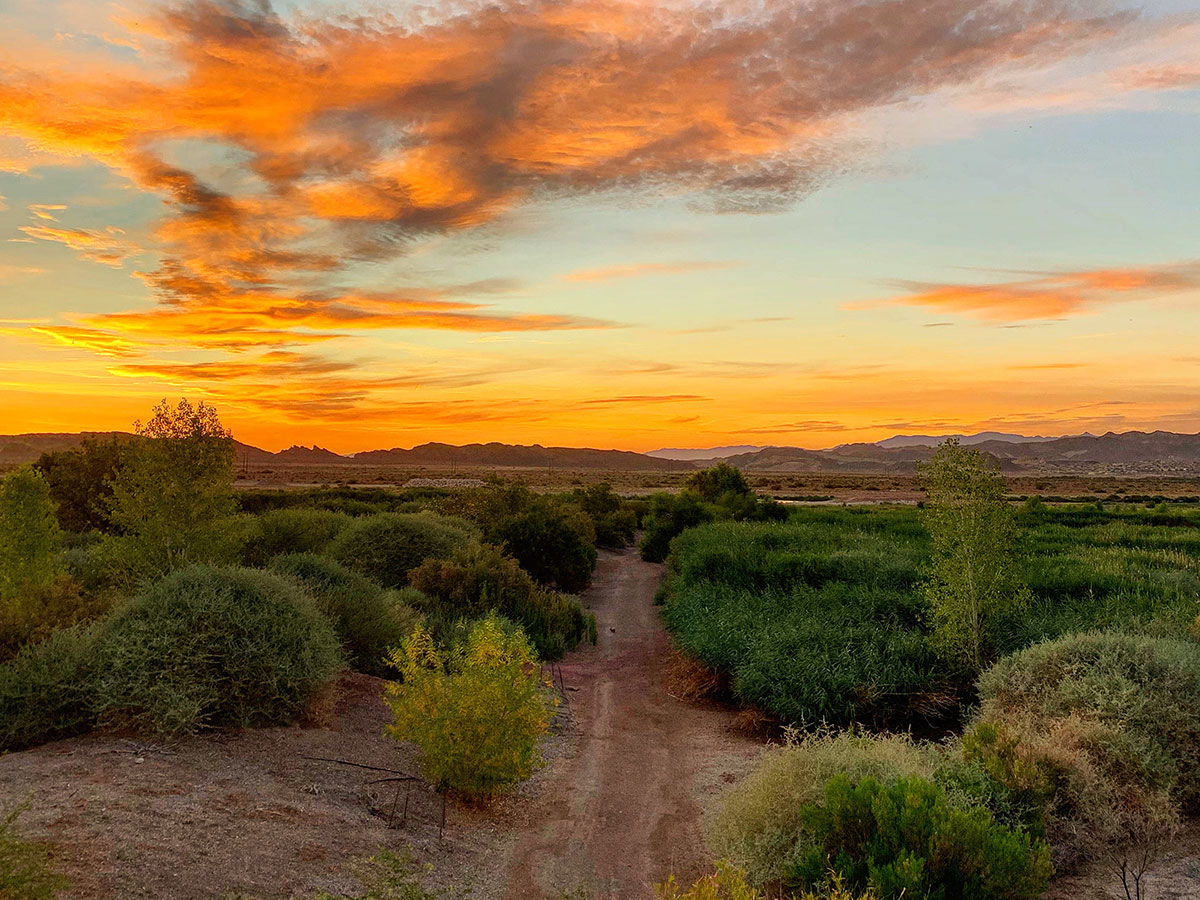Revegetation is critical to the success of restoration and enhancement efforts in and along the Las Vegas Wash. At its historical peak in the 1900s, wetland vegetation covered more than 2,000 acres along the Wash. When revegetation activities began in 1999, only 200 acres remained due to increasing flows and erosion.
The construction of weirs provided an opportunity to remove existing vegetation — typically dominated by an invasive, non-native tree called tamarisk or salt cedar — and replace it with native trees, shrubs and grasses. Revegetation secures the soil, protecting it from further erosion, and enhances and improves wildlife habitat. To date, more than 630 acres have been revegetation along the Wash with major stabilization.
Revegetation habitat types
Wetlands – Plants found in wetlands have the evolutionary ability to live and grow in water-saturated areas. Wetland serve as effective filtration systems while also being important resources for fish and bird species.
Riparian – These areas grow close to water sources but outside of the saturation zone. Along the Wash, this zone is dominated by cottonwood and willow trees rising high above the desert floor, providing a unique resource in the Mojave Desert.
Upland – The most common habitat type in Southern Nevada, upland areas can include trees like mesquites and acacias but mostly include shrubs like creosote and globemallow.



